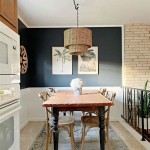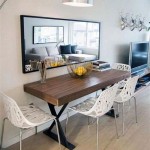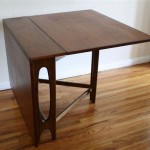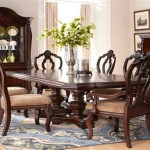Wall Paneling For Dining Room: Elevating Aesthetics and Functionality
Wall paneling, a decorative and functional addition to interior spaces, has experienced a resurgence in popularity, particularly in dining rooms. Its ability to transform a space from simple to sophisticated, coupled with its practical benefits, makes it a compelling choice for homeowners and designers alike. The selection of wall paneling involves careful consideration of style, material, installation, and overall design coherence.
The dining room, traditionally a space for shared meals and gatherings, benefits significantly from the visual interest and tactile warmth that wall paneling provides. It offers a means of introducing character, defining zones within open-plan layouts, and even improving the room's acoustic properties. The implementation of paneling extends beyond mere aesthetics; it offers a practical solution for concealing imperfections in walls and providing a durable surface that withstands daily wear and tear.
The Diverse Styles of Wall Paneling
The range of wall paneling styles available caters to a wide variety of tastes and architectural designs. Understanding these styles is crucial when selecting the appropriate paneling for a dining room.
Traditional raised paneling, often associated with period homes, comprises individual panels set within a frame. This style introduces depth and dimension to walls, creating a formal and elegant ambiance. It is typically constructed from wood and can be stained or painted to complement the overall color scheme of the dining room. Raised paneling is particularly well-suited for dining rooms with high ceilings and a classic design aesthetic.
Flat paneling, as the name suggests, features flat panels within a frame. This style offers a more streamlined and contemporary look compared to raised paneling. Its simplicity makes it versatile, allowing it to integrate seamlessly into various design styles, from minimalist to transitional. Flat paneling is often chosen for its clean lines and ability to create a sense of spaciousness, making it suitable for smaller dining rooms.
Beadboard paneling consists of narrow vertical planks with a rounded bead detail along the edges. This style evokes a casual and rustic charm, often associated with farmhouse or cottage-style interiors. Beadboard is relatively inexpensive and easy to install, making it a popular choice for DIY projects. In a dining room setting, beadboard can be used as a wainscoting or to cover the entire wall, creating a cozy and inviting atmosphere.
Shiplap paneling, characterized by overlapping horizontal planks, has gained significant popularity in recent years. It offers a textured and visually appealing surface that can be painted or stained to achieve a variety of looks. Shiplap is often associated with coastal or industrial-inspired designs, but it can also be incorporated into more traditional settings. Its horizontal lines can visually widen a room, making it a desirable option for narrow dining areas.
Wainscoting refers to paneling that covers only the lower portion of a wall, typically up to chair rail height. This style provides protection to walls from scuffs and scratches while adding visual interest. Wainscoting can be combined with various paneling styles, such as raised panel, flat panel, or beadboard, to create a custom look. It is an effective way to add architectural detail to a dining room without overwhelming the space.
Beyond these core styles, other options include board and batten, which uses vertical boards with decorative battens (strips of wood) to create a grid-like pattern, and applied moldings, which involve attaching decorative moldings directly to the wall to simulate paneling. The choice of style depends on the desired aesthetic, budget, and the existing architectural features of the dining room.
Material Selection: Balancing Aesthetics, Durability, and Cost
The material used for wall paneling significantly impacts its appearance, durability, and cost. The selection process requires careful consideration of these factors to ensure the chosen material aligns with the homeowner's preferences and practical needs.
Solid wood, such as oak, maple, or pine, is a classic choice for wall paneling. It offers a natural warmth and beauty that is difficult to replicate with other materials. Solid wood is durable and can be stained or painted to achieve a variety of finishes. However, it is also one of the most expensive options and can be susceptible to moisture damage if not properly sealed. Solid wood paneling is ideal for dining rooms where a high-end, traditional look is desired.
Medium-density fiberboard (MDF) is an engineered wood product made from wood fibers glued together under heat and pressure. It is a more affordable alternative to solid wood and offers a smooth, consistent surface that is easy to paint. MDF is less susceptible to warping or cracking than solid wood, but it is also less resistant to moisture. MDF paneling is a good choice for dining rooms where cost is a primary concern and a painted finish is preferred.
Plywood consists of thin layers of wood veneer glued together. It is stronger and more stable than solid wood, making it a good choice for areas that are subject to heavy use. Plywood can be stained or painted, but its edges require special treatment to conceal the layered construction. Plywood paneling offers a balance of durability and affordability, making it suitable for a variety of dining room styles.
Vinyl paneling is a synthetic material that is resistant to moisture, stains, and scratches. It is easy to clean and maintain, making it a practical choice for high-traffic areas. Vinyl paneling is available in a variety of colors and textures, including wood-grain finishes. However, it lacks the natural warmth and character of wood and may not be suitable for formal dining rooms. Vinyl paneling is often used in commercial settings or in homes where durability and ease of maintenance are paramount.
Other materials, such as reclaimed wood or metal, can also be used for wall paneling. Reclaimed wood offers a rustic and eco-friendly option, while metal paneling can add an industrial or contemporary touch to a dining room. These materials require specialized installation techniques and may be more expensive than traditional paneling options.
When selecting the material for wall paneling, it is essential to consider the dining room's environment, the desired aesthetic, and the budget. Evaluating these factors will help ensure that the chosen material is both visually appealing and functionally appropriate.
Installation and Design Considerations
Proper installation is crucial for ensuring that wall paneling looks its best and performs as intended. Furthermore, considering the overall design context of the dining room is essential for creating a cohesive and visually appealing space.
Professional installation is recommended for complex paneling styles, such as raised panel or intricate molding designs. A professional installer will have the necessary tools and expertise to ensure that the paneling is installed correctly and securely. DIY installation is possible for simpler styles, such as beadboard or shiplap, but it requires careful planning and attention to detail.
Surface preparation is essential for any type of wall paneling installation. The walls must be clean, dry, and free of any loose paint or wallpaper. Uneven surfaces should be smoothed out with patching compound or sanding. Priming the walls before installing the paneling will help with adhesion and prevent moisture damage.
Accurate measurements are crucial for ensuring that the paneling fits properly. It is essential to measure the walls carefully and to cut the paneling to the correct size. A level should be used to ensure that the paneling is installed straight and plumb. Gaps or misalignments can detract from the overall appearance of the paneling.
The method of attachment will depend on the type of paneling and the wall surface. Solid wood paneling is typically fastened with nails or screws, while MDF or plywood paneling can be attached with adhesive or construction adhesive. Wainscoting is often attached with a combination of adhesive and nails.
Finishing touches, such as caulk and paint, are essential for creating a polished look. Caulking any gaps between the paneling and the wall will prevent moisture from entering and improve the appearance. Painting or staining the paneling will add color and protection. Consider the overall color scheme of the dining room when choosing a finish for the paneling.
Beyond installation, the design considerations are equally important. The scale of the paneling should be proportionate to the size of the dining room. Large-scale paneling can overwhelm a small room, while small-scale paneling may get lost in a large room.
The color and finish of the paneling should complement the other elements in the dining room, such as the furniture, lighting, and flooring. A cohesive color palette will create a sense of harmony and balance. The style of the paneling should also be consistent with the overall design aesthetic of the room.
The addition of lighting can enhance the beauty of wall paneling. Sconces or recessed lighting can highlight the texture and depth of the paneling, creating a more dramatic effect. Consider the placement of lighting fixtures when planning the paneling installation.
The use of accessories, such as artwork or mirrors, can further enhance the visual appeal of wall paneling. Carefully chosen accessories can add personality and interest to the dining room. Avoid overcrowding the walls with too many accessories, as this can detract from the beauty of the paneling.
Ultimately, the successful incorporation of wall paneling into a dining room requires careful planning, attention to detail, and a clear understanding of design principles. When executed effectively, wall paneling can transform a dining room into a stylish and inviting space that reflects the homeowner's personal tastes.

Recreate Your Dining Room Walls To Make Entertaining More Engaging Décor Aid

A Few Of Our Favorite Dinettes And Dining Rooms Gonyea Custom Homes

Dining Rooms White Wood Paneling Design Ideas

Wall Panelling Ideas Inspo Tablero

12 Dining Room Accent Wall Ideas Cornerstone Remodeling

Dining Room Paneling Inspiration That Won T Look Dated

Unique Accent Wall Ideas For The Dining Room Pennies A Fortune

Dining Room Remodel Installing Wall Panels Swoon Worthy

3 D Wall Panel Application In Dining Rooms Talissa Decor Ceiling Tiles

Dining Room Wall Paneling Design Ideas








